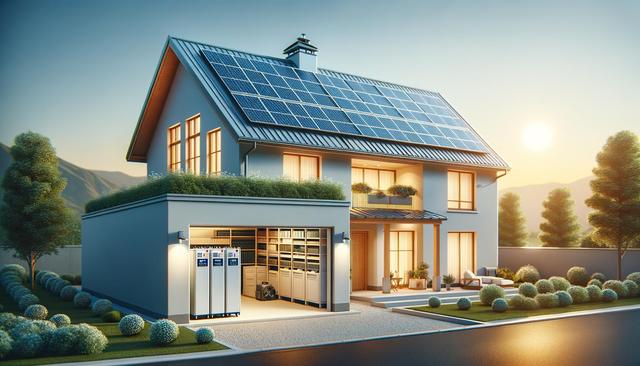
Secure Your Home with Solar Power Backup Systems
Understanding Solar Power Backup Systems
Solar power backup systems are designed to store energy generated by solar panels for use during times when sunlight isn’t available, such as at night or during power outages. These systems typically include solar panels, an inverter, and a battery storage unit. The main purpose of a backup system is to ensure that your home remains powered even when the main grid fails, making it a reliable solution for energy security. With increasing concerns about grid stability and extreme weather events, more homeowners are considering solar backup solutions as a long-term investment for home safety and resilience.
There are two common types of solar backup systems: grid-tied with battery backup and off-grid systems. The grid-tied option allows homeowners to use grid electricity when solar energy is insufficient, while off-grid systems are completely independent. Understanding your energy needs and the local utility regulations can help determine which type is most suitable for your household.
Benefits of Installing a Solar Power Backup
Investing in a solar power backup system provides several practical benefits that go beyond just keeping the lights on. One of the major advantages is the ability to avoid disruptions during blackouts or brownouts, which are increasingly common in many regions. Some of the key benefits include:
- Continuous power supply during outages
- Reduced electricity bills through energy storage and usage optimization
- Lower carbon footprint and increased use of renewable energy
- Enhanced home value due to energy-efficient upgrades
By storing excess solar energy produced during the day, you can use it during peak demand hours when electricity rates are higher, leading to additional savings. Moreover, many modern systems come with smart energy management features that allow homeowners to monitor and control their energy usage more efficiently.
Choosing the Right System for Your Home
Selecting the right solar power backup system involves evaluating several factors, including your energy consumption patterns, budget, and the physical space available for installation. Battery capacity is one of the most critical aspects to consider. Larger batteries offer greater storage but come at a higher cost. Likewise, the inverter should be capable of handling your household’s peak energy loads.
Here are some important considerations when choosing a system:
- Battery type (e.g., lithium-ion vs. lead-acid)
- System scalability for future energy needs
- Warranty and service offerings
- Compatibility with existing solar panels or grid connection
Consulting a certified solar installer can help you understand the technical details and ensure a smooth installation process. Many providers offer modular systems that can be expanded over time as your energy needs grow.
Installation and Maintenance
Proper installation is crucial for the efficient operation of your solar power backup system. The process typically involves assessing your energy needs, designing a system layout, acquiring necessary permits, and performing the actual installation. Most systems are installed within a few days, depending on their complexity. Coordination with your local utility may also be required, especially for grid-tied systems.
Maintenance requirements for solar power backups are generally low, particularly for modern lithium-ion battery systems. However, regular checks are recommended to ensure optimal performance:
- Inspect solar panels for dirt or debris
- Monitor battery health and charge cycles
- Check inverter status and system alerts
- Schedule annual professional inspections
These steps can help extend the lifespan of your system and ensure it functions during critical moments. Many systems also offer mobile app connectivity, allowing homeowners to track energy production and storage in real time.
Cost and Long-Term Value
While the initial investment in a solar power backup system can be significant, the long-term financial and practical benefits often outweigh the upfront cost. The total cost depends on system size, battery capacity, and installation complexity. However, many regions offer incentives, rebates, or tax credits that can reduce the initial expense substantially.
Over time, homeowners can expect to see savings on their electricity bills, especially if they live in areas with high utility rates or frequent outages. Additionally, having a reliable backup system can protect sensitive electronics and appliances from power surges and interruptions. Some insurance companies may even offer discounts on home policies for properties equipped with energy backup systems, recognizing the added safety and resilience.
When evaluating long-term value, consider the system’s lifespan—many solar panels are rated for 25 years or more, and high-quality battery storage units can last 10 to 15 years with proper care. This durability, combined with energy cost savings and increased home value, makes solar power backup systems a compelling option for many homeowners.
Conclusion: Powering Peace of Mind
Solar power backup systems offer a reliable way to enhance your home’s energy security while promoting sustainable living. Whether you’re looking to protect your household from unexpected power outages or seeking greater control over your energy usage, these systems provide a practical and forward-thinking solution. By carefully selecting the right components and maintaining them properly, homeowners can enjoy years of dependable performance and potential financial savings. Investing in a solar backup system is not just about electricity—it’s about peace of mind, energy independence, and a step toward a more resilient future.


